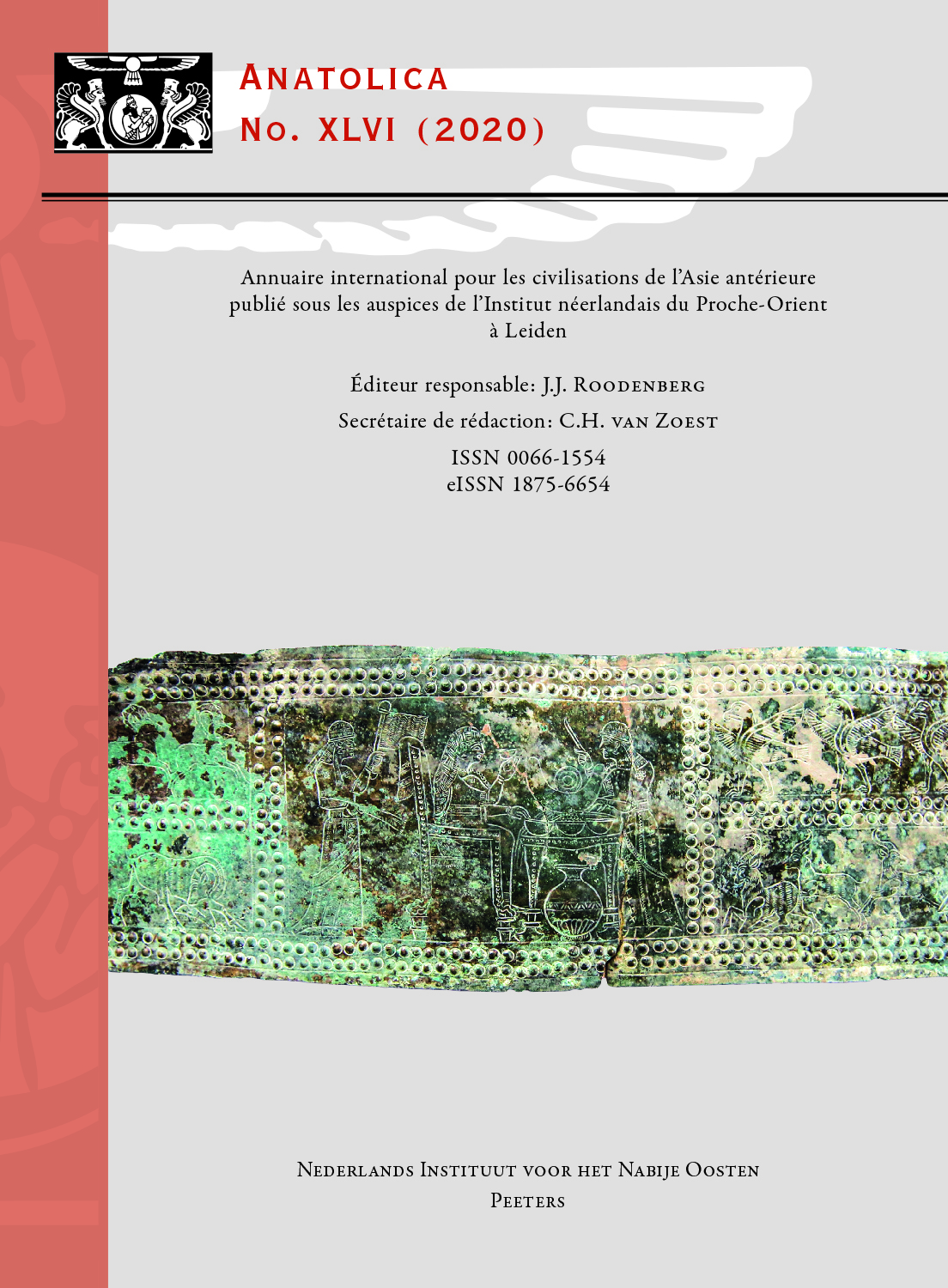 previous article in this issue previous article in this issue | next article in this issue  |

Preview first page |
Document Details : Title: Hirbemerdon Tepe during the Iron Age Period Subtitle: A Case Study in the Upper Tigris River Region Author(s): GUARDUCCI, Guido , LANERI, Nicola Journal: Anatolica Volume: 36 Date: 2010 Pages: 17-65 DOI: 10.2143/ANA.36.0.2049238 Abstract : The main purpose of this paper is to analyze the material culture uncovered from the Iron Age levels (ca. 1050-610 BC) at the site of Hirbemerdon Tepe, located along the upper Tigris river in southeastern Turkey. The first part of the paper includes a brief introductory chapter dedicated to the site location and its geographical and environmental context, with a second chapter on the Neo-Assyrian historical sources on the area here considered. The second half of the paper instead comprises a detailed analysis of the architecture and pottery found in Hirbemerdon Tepe’s Iron Age levels with a specific focus on the most represented and best preserved phase, the Early Iron Age period (i.e., Phase IVA, ca. 1050-900 BC). Moreover, a catalogue describing the studied pottery fragments is attached at the end of the article as an Appendix. The final section of the paper places the ceramic assemblage in a broader historical context to better define the role played by the site of Hirbemerdon Tepe during the Iron Age, with a specific emphasis on the transformation that occurred in the socioeconomic landscape of the upper Tigris river due to the arrival of the Neo-Assyrians in the area during the ninth century BC. |
 |


